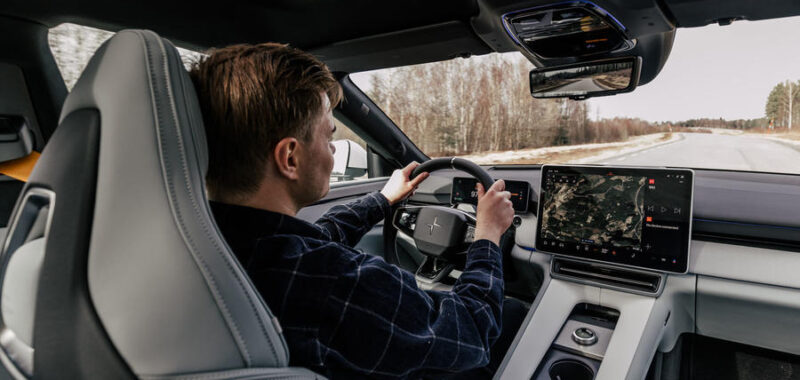Perhaps the most obvious and welcome point of difference from its Geely Group cousins is that the 4 uses a new, Polestar-developed infotainment system that’s unrelated to the troublesome interfaces deployed in the Smart and Volvo.
The massive 15.4in touchscreen – mounted landscape rather than portrait as in the 2 (Polestar says neither orientation has a distinct advantage) – has inevitably become the primary control interface, with only a volume knob remaining on the centre console as a token concession to tactility. But this digital interface is far better resolved and less infuriating to use than rival systems, with scrupulous attention having been paid to font size and menu orders to cultivate an obvious sense of hierarchy and reduce distractions on the move.
It gives easy access to the climate control and ADAS functions – each of which has its own animation to clearly show what it does, and is highlighted bright orange when activated so you can easily adjust on the move. There is no haptic feedback, but each icon beeps when pressed, and the dashboards are arranged clearly and memorably enough to be navigable without too much distraction. Besides, because every setting is linked to the driver’s profile and smartphone mirroring is fitted as standard, there should be no need to trawl through these menus regularly, in any case.
The shift away from physical buttons will dent its appeal for drivers with more analogue pretensions, but it does help to create a clean and airy environment that lives up to Polestar’s Scandi-cool, minimalist ethos. The glasshouse – somewhat ironically, considering the opaque rear end – feels massive and open, and the benefit of moving the rear header rail is tangible: a six-footer would have a good three or four inches of headroom in the back.
You sit lower in the 4 than in other SUVs of this size, which helps to cutivate that sense of sporting appeal, and the three-metre wheelbase allows for big saloon levels of legroom in each row.
All the soft furnishings and touchpoints are trimmed in slick, suitably modern textiles that cry out to be prodded and stroked – including an especially enticing ‘3D-knit’ texture modelled on running trainers – and the few physical controls that remain are reassuringly clunky and feel nice and durable.
Curiously, the top-rung 4 can be specified with real leather seats, which seems at odds with Polestar’s sustainability ethos, “but if we did not use it, it would be landfill”, reasoned materials boss Maria Uggla. “Vegan plastic is more vegan, but not more sustainable.”

